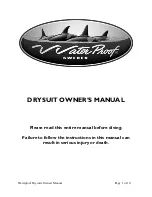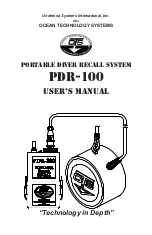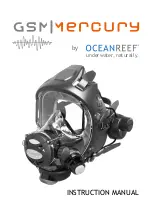
Addendum
V-Accordion
r
3
ENGLISH
ENGLISH
ENGLISH
ENGLISH
dion, on the other hand, produces mechanical valve noises
that cannot be suppressed on an acoustic instrument. Use
this parameter to specify how prominent the noise pro-
duced by the simulated Treble valves should be. The set-
tings you can select with the registers are:
The bass section of almost all accordion instruments can be
played via buttons. Such buttons produce a typical noise
when pressed. Use this parameter to specify how promi-
nent that button noise should be. The settings you can
select with the registers are:
This parameter allows you to specify which channels the
FR-2’s sections should use to transmit MIDI messages. By
default, all Roland V-Accordion instruments use MIDI
channel “1” for the Treble section, MIDI channel “2” for the
bass buttons and MIDI channel “3” for the chord buttons.
Certain accordions with MIDI functionality use MIDI chan-
nel “3” for the bass part (and channel “2” for the Chord
buttons). Selecting “Other” may therefore be more conve-
nient to use your existing sound module without changing
its receive channel settings. There are only two options
here that can be selected with the following registers:
This parameter allows you to set the level of the ORCHES-
TRA FREE BASS sound for a better balance with the other
available sections.
The settings you can select with the registers are:
This parameter allows you to choose the note system used
in Free Bass mode. In the owner’s manual, we already men-
tioned that there are a vast number of accordion varieties.
The same is true of Free Bass systems. Your FR-2 contains
the most popular ones.
Be aware that the system you select here is only used when
you activate the FR-2’s Free Bass mode. It is of no conse-
quence for the “regular” Bass mode. See the illustration on
page 5 for the note assignments.
Note:
This parameter is not reset when you load the factory defaults
(see the owner’s manual).
Note:
The FR-2 is supplied with several reference caps designed to
help you locate the bass buttons without looking at them. See also
the owner’s manual.
(The following function has changed.)
The strength/speed with which the bellows is pressed or
pulled influences the sound – which corresponds to an
acoustic accordion’s response. This effect can be translated
into a MIDI message most external instruments under-
stand.
If you want to use the bellows for expressive purposes,
switch this parameter on (register
[2]
). If you don’t (because
the external instrument is too sensitive and therefore
changes its volume too often), switch it off (register
[1]
).
The default setting (register
[3]
) has almost the same effect
as “on”, except that bellows expression messages are only
transmitted on MIDI channels 1 and 4. This is the recom-
mended setting when you use the FR-2 to control an
arranger module.
1
–40
5
+13
2
–27
6
+27
3
–13
7
+40
4•
0
Function
FR-2b/FR-2
Memorized
Bass Button Noise
[Eb3]/[29]
OK
Default setting: 0
1
–40
5
+13
2
–27
6
+27
3
–13
7
+40
4•
0
Function
FR-2b/FR-2
Memorized
MIDI TX Channels
[Eb4]/[30]
OK
Roland, Other
Default setting: Roland
1•
Roland
Treble= 1, Bass= 2, Chord= 3
2
Other
Treble= 1, Bass= 3, Chord= 2
Function
FR-2b/FR-2
Memorized
Orchestra Free Bass Level
[B
b
1]/[32]
OK
–40~Std~40
Default setting: Std
1
–40
5
+13
2
–27
6
+27
3
–13
7
+40
4•
0
Function
FR-2b/FR-2
Memorized
Free Bass Mode
[F
#
3]/[33]
OK
[1] Minor 3rd, [2] Bajan, [3] Fifth,
[4] N. Europe, [5] Finnish
Default setting: [1]
1•
Minor 3rd
4
N. Europe
2
Bajan
5
Finnish
3
Fifth
Function
FR-2b/FR-2
Memorized
Bellows Expression TX
[B3]/[23]
OK
Off, On, Arranger
Default setting: Arranger
1
Off
2
On
3•
Arranger
Addendum FR-2FB_0359.book Page 3 Wednesday, March 25, 2009 10:24 AM




































